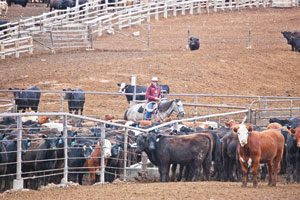The ruling from the 5th Circuit Court of Appeals in New Orleans came after a challenge, by nine farming organizations, that the EPA’s 2008 rules for discharge permits exceeded the authority granted under the Clean Water Act. The three-judge panel ruled unanimously in the groups’ favor on those terms.
Groups issuing the challenge included the American Farm Bureau Federation, the National Pork Producers Council, National Chicken Council and National Milk Producers Federation.
Farm petitioners issued a challenge in five separate circuit courts. The cases were consolidated and heard in the 5th Circuit by random selection.
The Natural Resources Defense Council, Sierra Club and Waterkeeper Alliance were additional parties in support of the EPA’s rules.
“We are pleased that the federal courts have again reined in EPA’s unlawful regulation of livestock operations under the Clean Water Act,” said AFBF president Bob Stallman.
“The court has affirmed that EPA, like other federal agencies, can only regulate where it has been authorized by Congress to do so.”
The EPA rules under review came about after a previous decision from the 2nd Circuit Court (in 2005) that said the federal agency couldn’t force CAFOs to apply for a permit based on “potential to discharge” – only for the actual discharges.
But when the EPA responded with its new rules in 2008, it said that a CAFO that discharges or “proposes to discharge” liquid waste must apply for a Clean Water Act permit.
Under new EPA rules, a CAFO had to determine if it was in the “propose to discharge” category by determining if the facility was “designed, constructed, operated or maintained such that a discharge would occur.”
Furthermore, the new rules levied an additional penalty if the CAFO operator had not initially applied for the permit.
Calling this a “duty to apply,” the EPA could assess an additional penalty if the CAFO didn’t do its “voluntary certification” to see if it would discharge waste.
The 5th Circuit followed its sister court’s initial ruling to shoot down the “potential to discharge” requirement – saying that it still amounted to excessive authority not granted by Congress.
The EPA’s attempted “duty to apply” for the permit was also thrown out.
“We conclude that the EPA cannot impose a duty to apply for a permit on a CAFO that ‘proposes to discharge’ or any CAFO before there is an actual discharge,” the court ruled.
“These cases leave no doubt that there must be an actual discharge into navigable waters to trigger the CWA’s requirements and the EPA’s authority.”
Tamara Thies, environmental counsel for the National Cattlemen’s Beef Association, said the ruling is a reaffirmed victory for animal feeding operations.
“The decision confirms what we have known all along, which is that EPA has no authority to require animal feeding operations to get permits under the Clean Water Act as long as they do not discharge.
The EPA has tried and tried to force inappropriate permitting, and the courts have again said ‘no.’”
Ellen Steen, an attorney for AFBF, said in FB News that because Clean Water Act provisions are matched at the state level, states may aim to regulate CAFOs under the same “propose to discharge” limitations.
Those restrictions now should come off the books.
Richard Yost, a spokesman for the EPA, said the agency is reviewing the court’s decision for its impact on the permit program. ![]()
PHOTO
Riley Timmons, a receiving cowboy at Simplot Land & Livestock feedyard in Grandview, Idaho, observes new additions to the lot. Photo by Victoria Ludlow.








